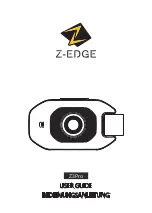
Version 1.0 rev 14 Aug 2019
32
Balor
4.5.5 o
veRvieW
of
tHe
R
olling
s
HUtteR
and
g
lobal
s
HUtteR
M
ecHanisMs
In Rolling Shutter mode, charge transfer happens on a per row basis whilst in Global Shutter charge transfer happens for
the whole sensor or globally.
To read out a pixel in Rolling Shutter mode, the following occurs within the analog circuitry:
1. The read out node is reset
2. The node level (reference level) is sampled
3. Charge is transferred from photodiode to node
4. The node level (signal level) is sampled
5. Reference level (Step 2) is subtracted from signal level (Step 4) to get real signal
This process is commonly referred to as CDS (Correlated Double Sampling) and is done in the analog domain before
digitization. The reason it is required is due to what is known as reset noise, this arises because every time the node is
reset it does not settle at exactly the same level and hence the actual level must be measured (
Step 2.
) and subtracted
from the signal level (
Step 4
) to get the real signal.
As mentioned above in Rolling Shutter charge transfer happens on a per row basis; therefore each row follows steps 1 –
5, until the entire sensor is read out. The disadvantage of this is that the start and end exposure time moves by the Row
read out time for each subsequent row. So whilst each row of pixels is exposed for exactly the same length of time they
do not all start and end at exactly the same time.
In Global Shutter the read out node reset and the charge transfer happen globally. Since the same read out circuitry is
used for every row there is nowhere to store the measured reference level for every pixel and so a reference frame is
digitized and read out from the sensor before the charge transfer occurs. Then the signal frame is digitized and read out
from the sensor. The two are subtracted in the digital domain to get the ‘real signal’. Reading two frames to get a real
signal frame effectively doubles the cycle time when compared to Rolling Shutter.
















































